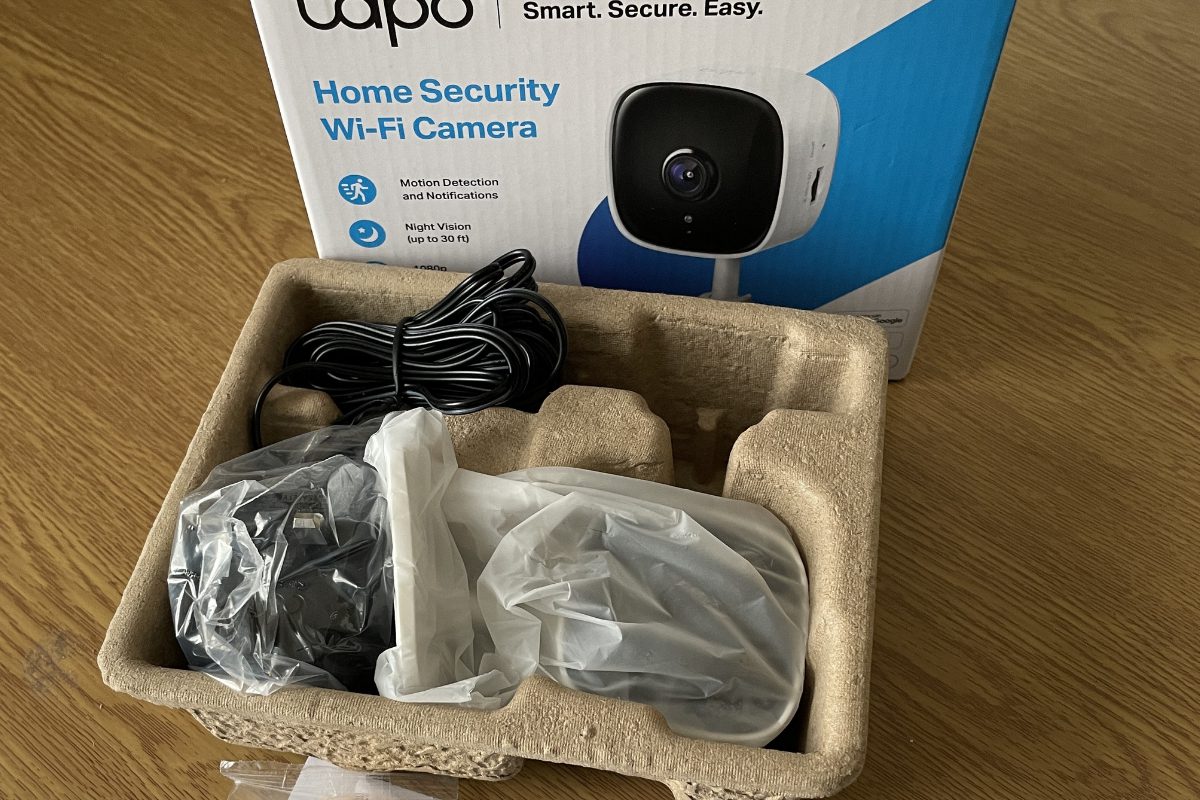In this blog post, we will explore whether the popular TP-Link Tapo C100 security camera is a cordless, wireless model or if it requires a power cable to operate. We’ll examine the camera’s design, features, and specifications to determine if it has a built-in battery or relies solely on AC power. By the end, you’ll have a clear answer to this question.
Key Takeaways
- The TP-Link Tapo C100 is not a cordless, wireless security camera.
- It connects to power via an included AC adapter and 3-meter cable.
- No built-in battery for cable-free operation is mentioned in the product details.
- Camera, mount, and power supply are the only items in the retail box
- Continuous AC power enables constant recording and live view.
Related Post: TP-Link Tapo C100 Home Security Wi-Fi Camera Review.
Does the Tapo C100 Have a Battery for Cordless Use?
After thoroughly researching the Tapo C100 across retailer sites, product manuals, and even unboxing videos, it’s evident this WiFi security camera requires continuous power from an outlet and does not have a removable battery.
Nowhere in the camera’s description from TP-Link and other sellers is a battery or cordless functionality noted. Instead, the contents list “DC Power Adapter” and “3 Meter Power Cable” as the sole accessories. This clearly indicates reliance on the included AC power supply module.
Moreover, sample unboxing clips show only the camera, adjustable mount, and power components inside the box—no battery or alternate cables for potential cordless operation.
Considering the Tapo C100 touts full 1080p recording, night vision, motion alerts, and two-way audio, its power demands likely require an outlet, not a battery that would need regular swapping.
What Do the Specifications Reveal?
Checking the Tapo C100’s specifications tells a similar story. The technical details from TP-Link focus exclusively on the required AC adapter:
- Input: 100-240V AC, 50/60 Hz
- Output: 9V DC, 0.6A
- Connects to the camera via a 3-meter cable.
Again, there are no specs provided for a battery, USB power bank compatibility, or even a microSD slot to potentially enable standalone recording.
The camera does have a reset button and status light—but no battery indicator. This reaffirms the intention for 24/7 AC power rather than remote cordless usage.
Why a Power Cable Instead of Batteries?
You might be wondering why TP-Link opted to supply the Tapo C100 with a long power cable instead of the flexibility of batteries.
There are a few compelling reasons to choose a corded approach:
- Continuous power for 24/7 recording without interruptions
- Unlimited live view and motion alert monitoring
- High-quality 1080p video supported only by outlet power
- Avoiding battery procurement, replacement, and disposal
So, although batteries would offer cable-free placement, they bring major limitations. The Tapo C100 prioritizes reliability and performance over remote wireless capability.
Final Thoughts
In the end, the TP-Link Tapo C100 is clearly not intended as a cordless, battery-powered security camera. Through its design, packaging, and specs, continuous AC power is mandatory for operation.
The included cable does permit flexible positioning while still delivering outlet energy for uninterrupted recording, motion alerts, and live view through the Tapo app. Just don’t expect long-term wireless capability!
Hopefully, this breakdown gave you a conclusive answer regarding batteries and cables for the Tapo C100. Let me know if you have any other security camera questions!
Useful Links:
Related Posts to Read:
- Is the TP-Link Tapo C100 Home Security Wi-Fi Camera Worth Buying?
- 10 Alternatives to the TP-Link Tapo C100 Home Security Wi-Fi Camera.
- Is the TP-Link Tapo C100 Security Camera Wireless?
References:
- About the TP-Link Tapo.
- About TP-Link Tapo Support.
- About Security Camera.









